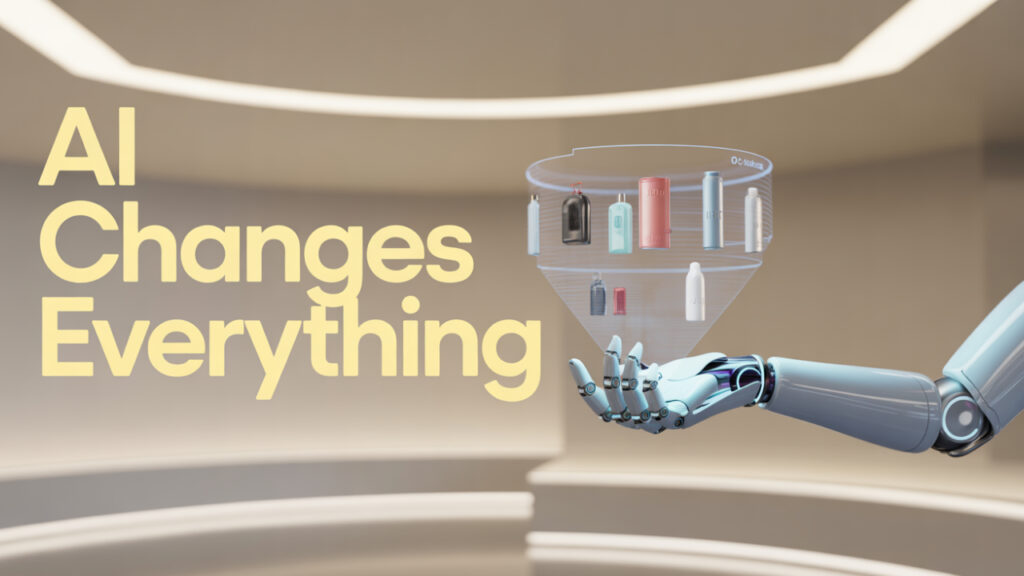Introduction
Wearable technology has rapidly evolved from simple step counters and fitness trackers to sophisticated, AI-powered devices that monitor our health, enhance productivity, and even augment reality. In 2025 and beyond, we’re seeing a revolution that is transforming what it means to “wear” technology. From smart textiles to brain-sensing bands, wearables are becoming more intelligent, unobtrusive, and deeply integrated into our daily lives.
In this article, we’ll explore ten game-changing innovations in wearable tech that are not only changing the industry but also the way we live, work, and interact with the world. Whether you’re a tech enthusiast, a digital health advocate, or just curious about the future, these innovations will inspire and inform. Let’s dive deep into the world of wearable technology and uncover the trends, tools, and transformative devices that are leading this high-tech frontier.
1. Next-Gen Health Monitoring Sensors
Modern wearables have transcended basic heart rate monitoring. They now include:
- Non-invasive glucose monitors that measure sugar levels through sweat or optical sensors, helping diabetics monitor levels in real-time without painful finger pricks.
- Stress and hydration trackers using skin conductivity and temperature fluctuations, offering real-time suggestions for relaxation or fluid intake.
- Fatigue detection tools that combine ECG and EMG signals for worker safety, especially in high-risk professions like construction and logistics.
These advanced sensors have enabled wearables to act as personal health assistants, offering preventive insights and early detection for many conditions.

Real-world impact: Devices like the Apple Watch Series 9 and Fitbit Sense are already integrating more advanced health sensors. In the near future, you’ll be able to detect respiratory infections or even signs of depression using only a wrist-worn device.
2. Solar-Powered and Self-Charging Wearables
Battery life is one of the biggest limitations of wearables. Now, that’s changing with:
- Solar-powered fabrics that integrate thin, flexible solar cells into clothing. Imagine charging your smartwatch or earbuds while jogging in the park.
- Wireless textile charging coils, enabling charging through body movement or proximity to a power source, perfect for travelers or remote workers.
This innovation is especially promising for smart uniforms, outdoor wear, and travel gear. It also supports eco-conscious design by reducing dependency on electricity and disposable batteries.
Emerging trend: Some outdoor brands are developing jackets that can charge your phone and wearable simultaneously using kinetic and solar energy. Smart clothing isn’t just smart—it’s sustainable.
3. Smart Textiles and E-Clothing
Textiles are getting smarter:
- Embedded sensors track body posture, respiration, and even ECG data.
- Hexoskin smart shirts, for instance, are being used by athletes, astronauts, and healthcare researchers to monitor vital signs.
These garments are washable, comfortable, and capable of sending real-time data to smartphones or cloud platforms. Imagine a yoga outfit that corrects your posture, or a cyclist’s jersey that warns about dehydration.
Game-changer for sports & healthcare: Teams now monitor players in real-time during games, reducing injury risks. Meanwhile, hospitals are exploring e-gowns for post-surgery recovery.
4. Advanced Exoskeletons
Wearable robotics, or exoskeletons, are changing both the workplace and the healthcare industry:
- Industrial use: Helping warehouse workers lift heavy loads with less strain, reducing injuries and increasing productivity.
- Medical rehabilitation: Assisting stroke or injury patients to regain mobility, giving people back their independence.
Companies like Hypershell and Ekso Bionics are pioneering these human-enhancing technologies.
Future vision: Light-weight, affordable exosuits could one day help seniors maintain mobility and autonomy at home, reducing the need for assisted care.
5. AI-Powered Smartwatches and Health Rings
Today’s smartwatches are mini healthcare clinics on your wrist:
- AI-powered data insights on stress, sleep, blood pressure, and activity, not only collecting but analyzing patterns.
- Health rings like Oura and Whoop provide 24/7 biometric tracking in a discreet form, ideal for those who find watches bulky.
These devices now offer personalized health advice, not just raw data. Expect daily reports on your recovery rate, recommended workouts, and even mental health check-ins.
Market trend: Smart rings are catching up fast. They’re sleek, efficient, and almost invisible—ideal for health-conscious minimalists.
6. Smart Glasses and AR Headsets
The future is now visible through your lenses:
- Ray-Ban Meta smart glasses combine fashion with AI for real-time visual recognition, photo capturing, and even audio integration.
- Snap Spectacles and Google AR Glasses offer immersive experiences for creators, learners, and remote workers.
Smart glasses are expected to revolutionize remote work, virtual meetings, training, and even shopping. AR overlays can guide you through car repairs, virtual travel, or museum tours—all hands-free.

What’s next? Integration with voice AI like ChatGPT or Siri means your glasses will answer questions, suggest directions, and even translate languages on the go.
7. Smart Rings
These tiny wearables pack a big punch:
- NFC-enabled payments, smart lock access, and fitness tracking—all from a stylish ring.
- Discreet and elegant, they’re suitable for users who prefer minimalist tech.
Smart rings are gaining ground as an alternative to bulky wrist wearables.
Cultural shift: From engagement rings that track heartbeats to wedding bands that monitor sleep quality—rings are becoming more than symbolic.
8. Gesture-Control Wearables
Say goodbye to touchscreens:
- Neural bands like Mudra interpret electrical signals from your wrist to control devices with hand gestures.
- Perfect for VR/AR environments, accessible tech applications, and hands-free control in industrial or creative fields.
Gesture control is becoming essential in the immersive tech ecosystem.
Practical uses: Imagine controlling your drone or changing your music playlist with just a wave of your fingers—no screen needed.
9. Safety-First Wearables
Beyond fitness and convenience, some wearables prioritize personal safety:
- Keocam wearable dashcams for commuters and travelers, recording live footage with GPS tracking.
- Threat detection wearables for law enforcement and security personnel, capable of alerting HQ in emergencies.
These devices can send live alerts or stream video in case of emergency.
Women’s safety tools: Wearables disguised as jewelry can trigger SOS messages or record surroundings if the wearer feels threatened.
10. Sustainable Materials and Fashion Integration
Sustainability meets technology:
- Bioplastics and recycled metals make wearables more eco-friendly.
- Fashion-forward designs allow tech to blend seamlessly with everyday style.
Expect future wearables to be both environmentally conscious and trend-setting.
The style-tech revolution: Collaborations between tech companies and fashion brands (like Google + Levi’s Jacquard) are creating pieces that look good and work smarter.
The Future Outlook: What’s Coming Next?
Wearable tech is just getting started. With the integration of AI, 5G, and IoT, these innovations will become even more powerful and personalized:
- AI health coaches offering lifestyle advice based on your biometrics.
- Connected ecosystems where your watch talks to your fridge, thermostat, and car.
- Digital identity wearables replacing passwords, keys, and wallets.
Quantum sensors may soon allow wearables to detect diseases at molecular levels, creating a new frontier in precision medicine.
Final Thoughts
As we step into a future where technology literally wraps around us, these innovations in wearable tech will define new standards of living. From making our lives healthier and more productive to enhancing our experiences with augmented reality, wearable technology is no longer a novelty—it’s a necessity.
These wearables aren’t just accessories; they’re companions. And the best part? We’re only getting started.
Stay updated, stay connected, and get ready to wear your tech with pride.




I like the helpful information you provide in your articles.
I will bookmark your blog and check again here regularly.
I’m quite certain I’ll learn a lot of new stuff right here!
Good luck for the next!
Hi there, You’ve done an incredible job. I’ll definitely digg it and personally suggest to
my friends. I’m confident they will be benefited from this
site.
Thanks
Heya i’m for the first time here. I found this board and I find It really useful &
it helped me out a lot. I hope to give something back and aid
others like you aided me.
Thanks
You ought to be a part of a contest for one of the finest sites on the internet.
I will highly recommend this blog!
Thanks
These are really impressive ideas in on the topic of blogging.
You have touched some fastidious factors here.
Any way keep up wrinting.
Hi there! This blog post couldn’t be written any better!
Reading through this article reminds me of my previous roommate!
He continually kept talking about this. I am going to forward this information to him.
Fairly certain he will have a very good read. I appreciate you for sharing!
Thanks
We are a group of volunteers and starting
a new scheme in our community. Your site offered us
with valuable info to work on. You have performed an impressive task and our entire community will
be grateful to you.
Thanks
Hi there it’s me, I am also visiting this web page on a regular basis, this web site is truly good and
the people are genuinely sharing good thoughts.
I used to be able to find good information from your content.
Oh my goodness! Awesome article dude! Thank you,
However I am having problems with your RSS. I don’t know why I am unable to join it.
Is there anyone else getting similar RSS issues?
Anybody who knows the solution will you kindly respond?
Thanks!!
Thank you for your kind words! I’ll look into the RSS issue right away. Meanwhile, could you please let me know which browser or reader you’re using? That will help me fix it faster.
I really love your website.. Great colors & theme.
Did you build this amazing site yourself? Please reply back as I’m planning to create
my own blog and would like to learn where you got this from
or just what the theme is named. Thank you!
send email on this mail ukashaceo@gmail.com
Great article! This is the kind of information that should be shared around the web.
Disgrace on the search engines for now not positioning this publish higher!
Come on over and visit my site . Thank you =)
come in my mail ukashaceo@gmail.com